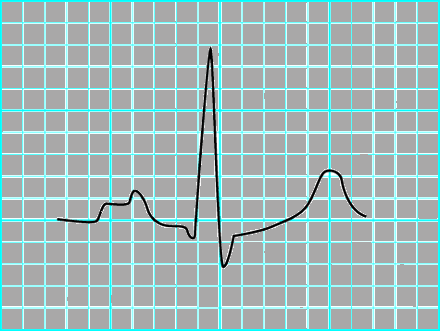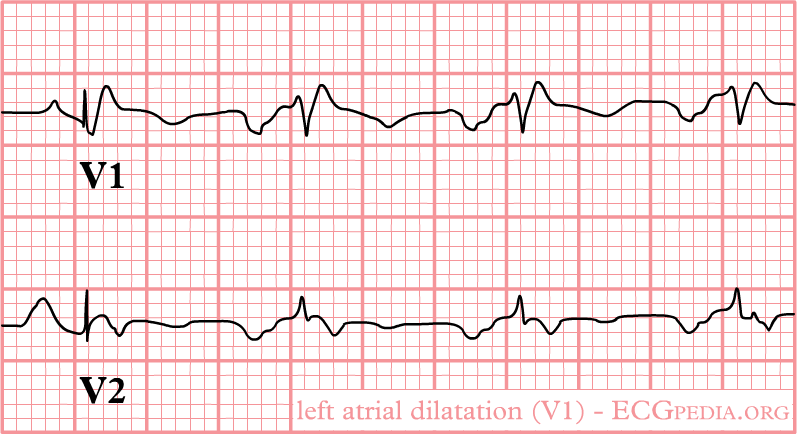Mitral regurgitation electrocardiogram
| Resident Survival Guide |
|
Mitral Regurgitation Microchapters |
|
Diagnosis |
|---|
|
Treatment |
|
Case Studies |
|
Mitral regurgitation electrocardiogram On the Web |
|
American Roentgen Ray Society Images of Mitral regurgitation electrocardiogram |
|
Risk calculators and risk factors for Mitral regurgitation electrocardiogram |
Editor-In-Chief: C. Michael Gibson, M.S., M.D. [1]; Associate Editor(s)-in-Chief: Mohammed A. Sbeih, M.D.[2]; Rim Halaby, M.D. [3]
Overview
In severe cases of chronic mitral regurgitation (MR), signs of left ventricular hypertrophy with strain, left atrial enlargement, and pulmonary hypertension may be observed on the resting electrocardiogram (ECG). Chronic mitral regurgitation is associated with an increased risk for atrial fibrillation. The ECG may reveal findings of coronary artery disease or other cardiac conditions that might have led to MR.
Electrocardiogram
Left Atrial Enlargement
ECG findings suggestive of left atrial enlargement include:[1][2]
- Broad, bifid P wave in lead II (P mitrale)
- Enlargement of the terminal negative portion of the P wave in VI.
- P wave amplitude >2.5mm in inferior leads (II, III, AVF) or >1.5mm in V1/V2 (P pulmonale)
Shown below is an ECG depicting the following in lead II:

Shown below is an ECG depicting the following in lead V1:
- Biphasic P wave with terminal negative portion > 40 ms duration
- Biphasic P wave with terminal negative portion > 1mm deep

Left Ventricular Enlargement
Left ventricular enlargement is associated with an increased QRS voltage on ECG and a strain pattern or inverted check mark pattern to the T wave in the lateral leads.
Pulmonary Hypertension
ECG findings suggestive of pulmonary hypertension include:
- Right axis deviation
- R/S ratio > 1 in V1
- R wave > 7mm in V1
- rSR' complex in V1 with R' > 10mm
- qR complex in V1
- Right ventricular strain pattern: ST segment and T wave inversion in V1-V3 and occasionally in inferior leads (II, III, AVF)
- Right bundle branch block: QRS duration> 0.12 seconds, rSR' in leads V1 & V2, wide slurred S waves in lateral leads (V5, V6, I)
Atrial Fibrillation
Atrial fibrillation is commonly seen with mitral regurgitation: This is identified as an irregularly irregular rhythm with absence P waves.